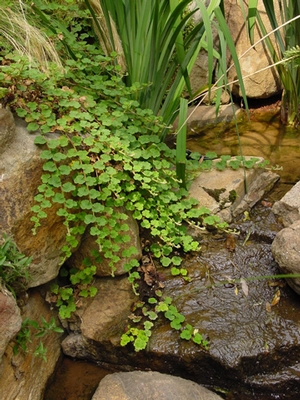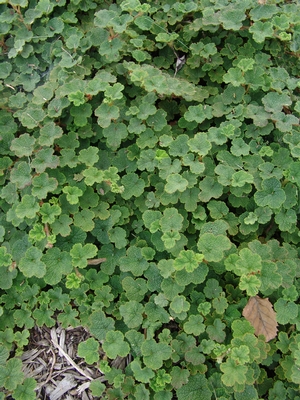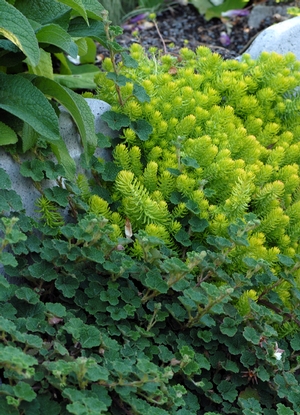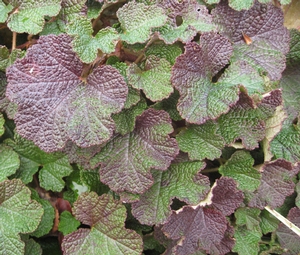Rubus calycinoides
Common: creeping raspberryRubus calycinoides LP32 - 32 per flat
- Height: 6"
- Spread: 18"-24"
- Spacing: 12"
- Hardiness Zone(s): 6-9


Rubus calycinoides LP32 - 32 per flat



An irresistible quilt-textured, creeping groundcover! Turns deep, vivid red in the fall. Small (1-1.5") deep green, maple-shaped leaves with smooth, light tan undersides. Nearly evergreen for year-round interest. Insect and pest free. White flowers with amber fruits in late spring. Very durable!
Grow in full sun and well-drained, average to dry soil. May also be successful in deep shade. Drought tolerant once established. Propagate by cutting away rooted stems or layering in early spring and fall. Excellent groundcover, container plant or rambling wall or hillside specimen, or allow to creep over rocks in a rock garden. It won't climb trees or nearby shrubs and is easily controlled with mechanical edging.
Rubus calycinoides is an irresistible quilt-textured, creeping groundcover! Growing about 6-12” tall, creeping raspberry is nearly evergreen for year-round interest with white flowers with amber fruits in late spring. It has small deep green, maple-shaped leaves with smooth, light tan undersides that turn deep, vivid red in the fall. R. calycinoides is very durable and excellent as a groundcover, container plant, or used on the edge of rambling wall or hillside. The branches gently creep and add texture to rocks in the rock garden or spill over a container edge, providing multi-dimensional interest.
R. calycinoides is native to the grasslands and thickets of the high elevations of the eastern Himalayas from Nepal to Bhutan. It grows best in full sun and well-drained, average to dry soil. However, many have had success planting in deep shade as long as plants are given supplemental irrigation while establishing. It may be propagated by cutting away rooted stems or layering in early spring and fall. Creeping raspberry is drought tolerant once established.
Rubus calycinoides is a favorite in our green wall in shade and in sun, able to tolerate heat and humidity with ease. A perfect, fast-growing groundcover for areas with deer pressure, creeping raspberry is covered in fine thorns that can be irritating to the skin if the gardener does not wear gloves. A word of caution, this plant is susceptible to fungal issues if planted in a location with low light, limited airflow and wet clay soils.